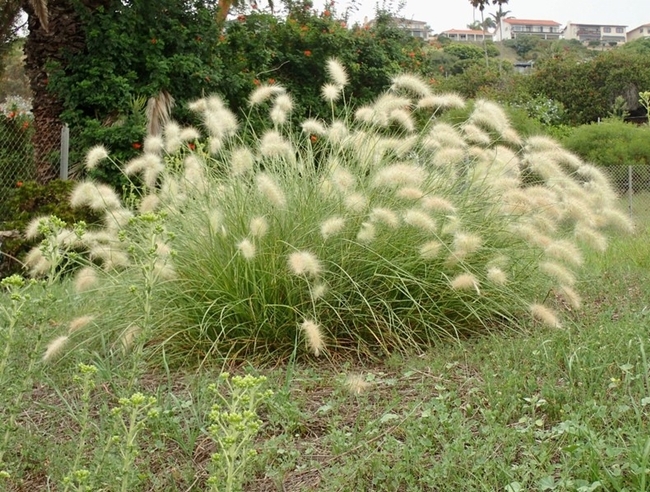
But no, what I've been seeing has been a cousin called feathertop - Pennisetum villosum or at one time Cenchrus longisetus.

Pennisetum villosum is an ornamental grass that is naturally distributed on hilly areas in warmer regions of Africa in the family Poaceae (http://foc.iplant.cn/). Several species of Pennisetum are popular in the garden for their bottlebrush spikes and cascading foliage. It has been widely planted and is found as escapes (got out of the garden) in California, Arizona, Kansas, Texas and other southern states. There have been more and more sightings in California, and Ventura county leads with the greatest number of observations according to the USDA Plant Data Base (https://plants.usda.gov/home/plantProfile?symbol=PEVI2). Most of the sightings in California have been coastal, so it's interesting that it's found in such diverse environments in other states. The findings here were made by Alison Colwell at the UC Davis Herbarium, https://herbarium.ucdavis.edu/index.html.
It spreads by seed and rhizome, and in a few blinks of an eye, can spread rapidly into new territory.

I am interested to see how far feathertop has spread in the Ventura/Santa Barbara area, and for that matter from Santa Cruz to San Diego. Calflora has a website, where observations can be reported: https://www.calflora.org. It's in the top left corner of the Home page "Add Observations".
Original source: Topics in Subtropics blog • 4/15/2024
